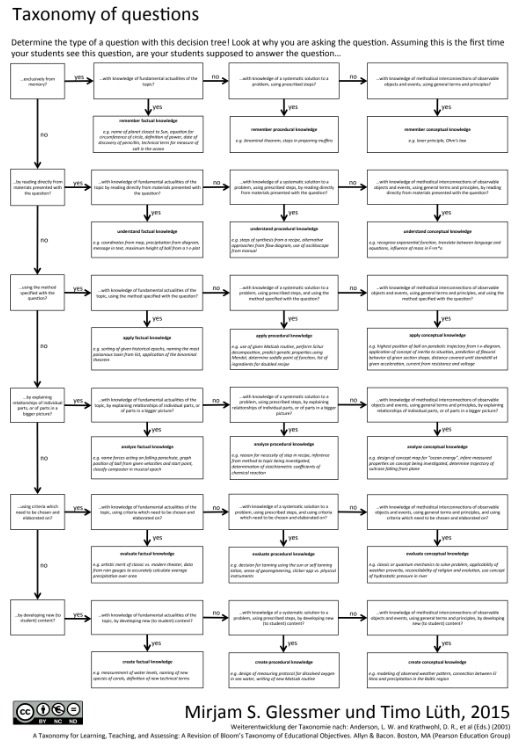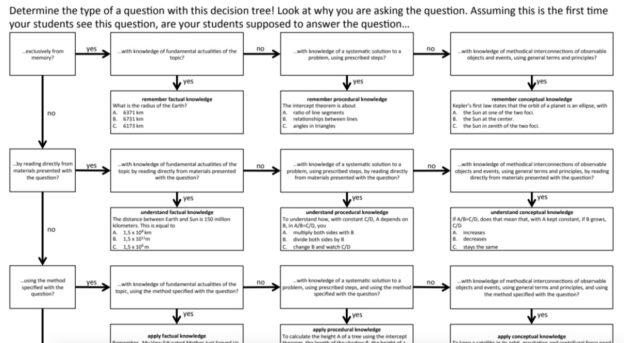I’m currently preparing a couple of workshops on higher education topics, and of course it is always important to talk about learning outcomes. I had a faint memory of having developed some materials (when still working at ZLL together with one of my all time favourite colleagues, Timo Lüth) to help instructors work with the modified Bloom’s taxonomy (Anderson & Krathwohl, 2001), and when I looked it up, I realized I had not blogged about it. But since I was surprised at how helpful I still find the materials, here we go! :-)
The idea is that instructors are often told to ask specific types of questions (usually “concept” questions), but that it is really difficult to know what that means and how to do it.
So we developed a decision tree that gives an overview over all different kinds of questions. The decision tree can support you in
- constructing questions that provoke specific cognitive processes in your students,
- checking what exactly you are asking your students to do when posing existing questions, and
- modifying existing questions to better match your purpose.
The nitty gritty details and the theoretical foundation are written up in Glessmer & Lüth (2016), unfortunately in german. But check out the decision trees below, I think they work pretty well on their own! We have four different versions of that decision tree, that guide you through both the cognitive and knowledge dimension until you reach the sweet spot you wanted to reach. Have fun!
Here is one example, links to the others below.
Downloads:
- Abstract decision tree (most helpful for getting familiar with the general concept) [pdf English | pdf German]
- Decision tree with example questions (most helpful for constructing, or classifying, or changing questions) [pdf English | pdf German]
- Decision tree with example multiple-choice questions (most helpful as inspiration when working with multiple-choice questions) [pdf English | pdf German]
- Comparison of our decision tree with “conventional” types of questions (if you want to find out what a “concept question” really is when classified in the Bloom taxonomy) [pdf English | pdf German]
Any comments, feedback, suggestions? Please do get in touch!
—
Glessmer, M. S., & Lüth, T. (2016). Lernzieltaxonomische Klassifizierung und gezielte Gestaltung von Fragen. Zeitschrift für Hochschulentwicklung, 11 (5) doi: 10.3217/zfhe-11-05/12
